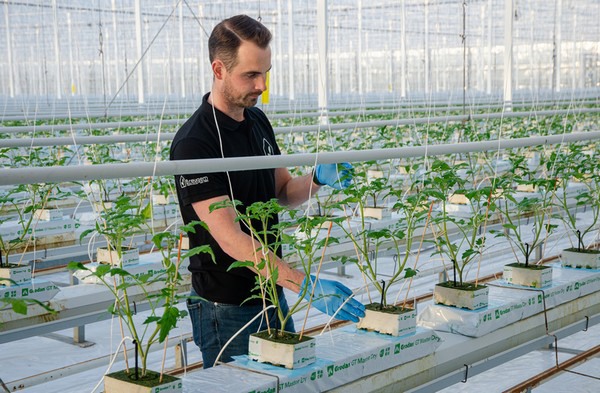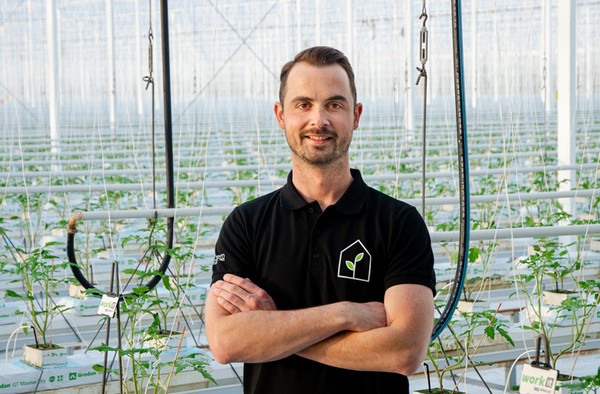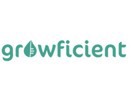Breugem Horticulture in Bleiswijk cultivates tomatoes on 5.5 hectares. Since 2020, Growficient substrate sensors are being used for monitoring and optimizing the irrigation strategy.
Limited insights substrate
Normally, Sebastiaan uses two scales in his greenhouse to monitor and steer the irrigation. These are placed in two different watering sections. However, according to Sebastiaan, this provides him with limited insights regarding steering information for his entire greenhouse.

"Before we started with Growficient, our wish was to have multiple measuring points throughout the greenhouse,’’ Sebastiaan says. ‘’We wanted the possibility to get a better and more reliable image of what we are doing regarding the irrigation and how that works out in the greenhouse. Normally, we did that based on two scales placed on two different gutters, but the 4 slabs that are on these two scales are not necessarily representative for what happens in the rest of the greenhouse.’’
Normally, when looking at the weight of just two slabs, you also include their dry-out. "To base your whole irrigation strategy on that is, of course, quite remarkable, especially when a head is broken or something similar; then the scale is not representative at all anymore. If you fail to notice this in time, you can make mistakes.’’
Sebastiaan thinks that improving the irrigation strategy starts with gathering reliable data throughout the entire greenhouse.
Advantages sensors
He states that this has been accomplished by using the sensors of Growficient. "Now, we have measuring points in each watering section, even multiple ones per gutter. You get to know your greenhouse even better and the insights help to exclude unnecessary risks," Sebastiaan continues. Moreover, he experiences the collaboration with Growficient positively: "It is very pleasant to work with a small startup like Growficient, and the decision-making is very flexible."
Dirk Jan Mulder of Growficient: "With Growficient, our goal is to support growers as much as possible when it comes to their irrigation and to create a feeling of peace of mind. Multiple measuring points spread out throughout the greenhouse make for a clear overview and reliable averages that the grower can really use to improve." Dirk Jan's colleague, Tim Engelman, adds: "The sensors are very versatile in their use. For example, during the current period when many growers are planting, the sensors can be used to measure within the planting blocks on the slab. This allows growers to irrigate their young plants optimally."

At Breugem, they always looked at the drain percentages as well to see if the slabs got wetter or drier, but "with these drain figures, you’re often overtaken by the events. The advantage that we have now is that you have a lot more insight and can follow the events directly within the slab without having to wait for drainage to occur. Also, the heatmap is a valuable addition. With it, it is easy to see how differences develop between watering sections and between the sensors as time progresses."
Regarding the influence the sensors have on his strategy, he says: "Above all, it creates peace of mind and mistakes are less likely to occur. The lines that our strategy is based on are more reliable." He also thinks the strategy could be further improved by optimizing the start and stop moments for irrigation.
Steering information: scale vs. sensors
When it comes to differences between the scales and the sensors, Sebastiaan indicates: "The sensors give you the ability to adjust the watering section level if needed. That is one of the biggest gains."
In addition to that, he has thought about the next steps he wants to take, starting with next season. "For us, it is important to start working with threshold values next year. That is an area where we can still improve. We now trust the system; it works well and gives clear insights." Working with threshold values is important to anticipate and irrigate proactively, Sebastiaan thinks.
He is in favor of a connection to the climate computer so that the threshold values can work together with the computer: "Then your sensors will be used optimally. To only do that on the two scales is odd, but with multiple sensors spread throughout the greenhouse this is much better."
When he is asked if he thinks he still needs the scale after that, he says: "The scale could now be phased out. Working with the sensors is reliable and you can work more flexibly and in-detail."
For more information:
Dirk Jan Mulder Growficient
Growficient
info@growficient.com
www.growficient.com
